#mongol women
Explore tagged Tumblr posts
Text
Mongol women at work
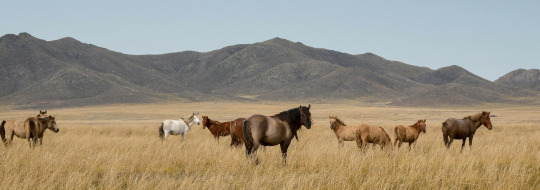
"No records account for women specifically working on the postal roads as couriers, although Mongol women often had physically demanding jobs. Alongside elite women sometimes participating in hunting and warfare, women at all levels of society would herd animals and were in charge of packing up wagons to move camp.
Additionally, Yuan governmental policy assigned specific jobs required for the smooth running of the empire to households (for example, post-road couriers), which meant that if a man was not available to do a job (due to absence or death), women would be obliged to step into the role assigned to her family.
In the record Heida Shilüe 黑韃事畧 (A Sketch of the Black Tatars), the Song dynasty envoy Peng Daya’s 彭大雅 observations from a visit to the Mongol territories in 1233, expanded upon by Xu Ting’s 徐霆 (another Song envoy) record from 1235–1236, both men note that Mongol women did many tasks on horseback. Peng writes, “In horsemanship and archery, babies are tied with cords onto plats which then are fastened onto horses’ backs, so they can go about with their mothers”. Xu Ting elaborates on Peng’s observations with this anecdote:
I saw an old Tatar lady, when she had finished giving birth to a baby in the wilderness. She used sheep’s wool to wipe off the child, then used a sheepskin for swaddling clothes. Binding the baby up in a little cart, four or five feet long and one foot wide, the old lady thereupon tucked the cart crosswise under her arm and straightaway rode off on horseback.
This is a strange story—why would Xu Ting have been in a position to witness a woman giving birth? As his account of the Mongols highlights, the Mongol population that Xu Ting interacted with were post-road couriers during his travels within the empire and personnel at the Mongol court, and it is unlikely that he witnessed a woman giving birth and immediately riding off on her horse to take up courtly duties, so it is plausible that this was a woman he saw who was working along the postal road, filling in for an absent male relative. Therefore, while no specific accounts of women postal couriers exist, in reading between the lines of Xu Ting’s narrative, the possibility of women postal workers in the Yuan becomes more likely."
Riders in the Tomb: Women Equestrians in North Chinese Funerary Art (10th–14th Centuries), Eiren L. Shea
#history#women in history#women's history#mongol women#working women#13th century#mongolia#yuan dynasty#mongol history#historyblr#china#asia#asian history
56 notes
·
View notes
Text
the pathologic Kin is largely fictionalized with a created language that takes from multiple sources to be its own, a cosmogony & spirituality that does not correlate to the faiths (mostly Tengrist & Buddhist) practiced by the peoples it takes inspirations from, has customs, mores and roles invented for the purposes of the game, and even just a style of dress that does not resemble any of these peoples', but it is fascinating looking into specifically to me the sigils and see where they come from... watch this:
P2 Layers glyphs take from the mongolian script:

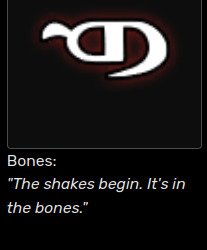

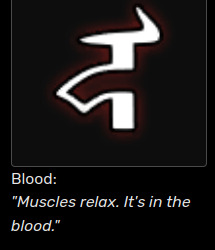



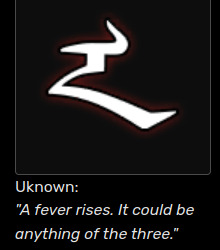
while the in-game words for Blood, Bones and Nerves are mongolian directly, it is interesting to note that their glyphs do not have a phonetic affiliation to the words (ex. the "Yas" layer of Bones having for glyph the equivalent of the letter F, the "Medrel" layer of Nerves having a glyph the equivalent of the letter È,...)
the leatherworks on the Kayura models', with their uses of angles and extending lines, remind me of the Phags Pa Script (used for Tibetan, Mongolian, Chineses, Uyghur language, and others)
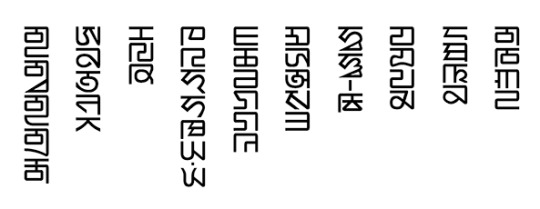

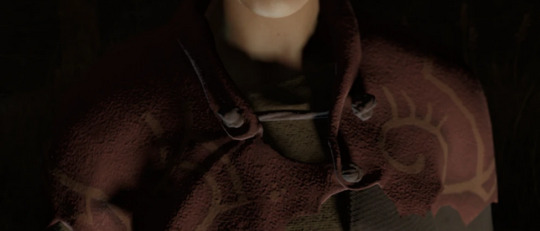
some of the sigils also look either in part or fully inspired by Phags Pa script letters...



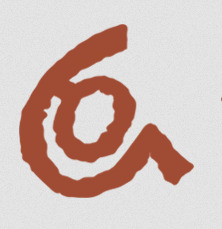


some look closer to the mongolian or vagindra (buryat) script

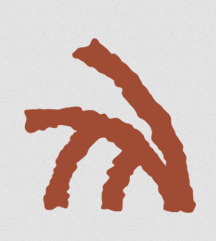
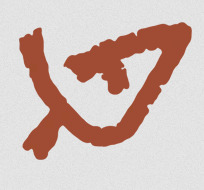

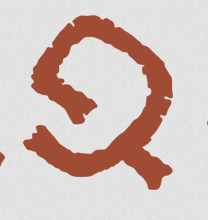
looking at the Herb Brides & their concept art, we can see bodypainting that looks like vertical buryat or mongolian script (oh hi (crossed out: Mark) Phags Pa script):
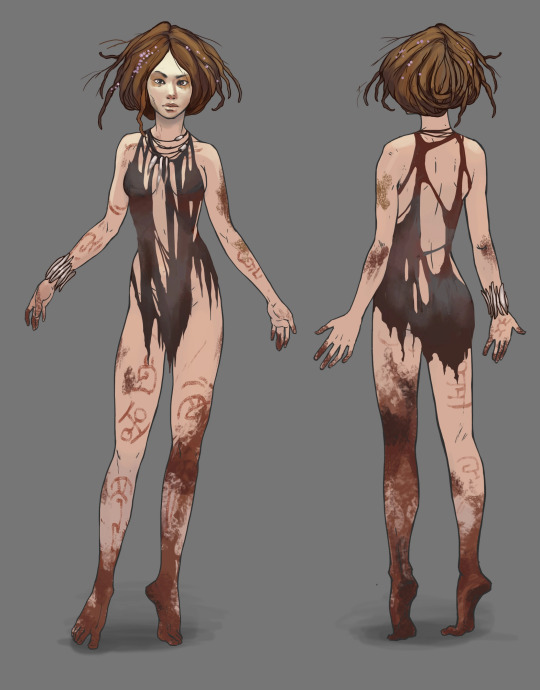
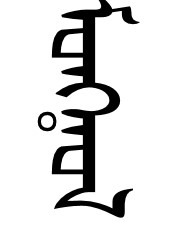
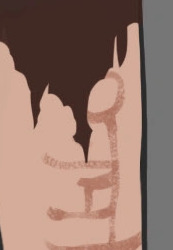
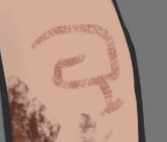

shaped and reshaped...
#not sure how much. what's the word. bond? involvement? not experience. closeness? anyone in the team has with any of these cultures#but i recall learning lead writer is indigenous in some way & heavily self-inserts as artemy [like. That's His Face used for#the p1 burakh portrait] so i imagine There Is some knowledge; if not first-hand at least in some other way#& i'm not in the team so i don't know how much Whatever is put into Anything#[ + i've ranted about the treatment of the brides Enough. enough i have]#so i don't have any ground to stand on wrt how i would feel about how these cultures are handled to make the Kin somewhat-hodgepodge.#there is recognizing it is Obviously inspired by real-life cultures [with the words;the alphabet;i look at Kayura i know what i see]#& recognizing it Also is. obviously and greatly imagined. not that weird for you know. a story.#like there is No Turkic/Altaic/Mongolic culture that has a caste of all-women spiritual dancers who place a great importance on nudity#as a reflection of the perfect world and do nothing but dance to bring about the harvest. ykwim...#like neither the Mongols nor the Buryats nor the Tibetans dress the way the Kin does. that's cos the Kin is invented. but they're invented.#.. on wide fundations. ykwim......#Tengrism has a Sky Deity (Tengri) with an earth-goddess *daughter* whereas the kin worship an Earth-Goddess mother of everything#+ a huge bull. Buddhism has its own complete cosmogony & beliefs which from the little I know Vastly Differ from anything the Kin believes#like. yeah. story. but also. [holds myself back from renting about the Brides again] shhh...#neigh (blabbers)#pathologic#pathologic 2
305 notes
·
View notes
Text
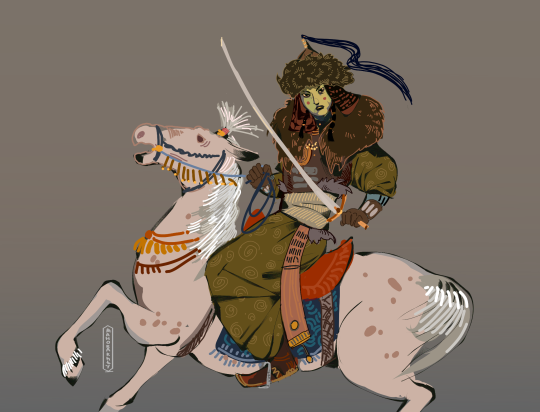
Happy women's day!
And today mongolian princess Khutulun congratulates you. She was Haidu's daughter, who was a grand grandson of Genghis Khan. Khutulun struggled like a man and ruled armies. She and her father took part in the Civil war in Mongolian Empire.
#khutulun#mongol history#mongol empire#mongolia#woman#women's day#mongolian woman#nomad#female warrior
78 notes
·
View notes
Note
Since the Thousand Sons are inspired by the Ancient Egyptians, wouldn't their Primach, Magnus, also have multiple wives, since the pharaohs also did?
Again apologies for the incoming history lore dump but I’ve got to get my moneys worth from my undergrad.
Ancient Egypt covers thousands of years of history - it was an ancient empire when Rome was young, and old enough for there to be ancient Egyptian archaeologists studying even more ancient Egypt. Cleopatra is closer to us than the pyramids timeline wise. All that to say that sweeping statements about Egypt always come with the caveat that it was around for A LONG ASS TIME and therefore morals and behaviours changed as it went on and anything I say isn’t applicable to all of the kingdoms.
having said that: yes pharaohs had multiple wives. They lived in the harem, which was way more than just a collection of consorts for the pharaohs sexual pleasure - the harem was a deeply political institution, where women schemed and plotted and sometimes even murdered to ensure that their son got onto the throne. Women in ancient Egypt had more political power than you might think - they were ofc subject to their husband or son, but it was considered perfectly normal for a woman to rule as regent while her kid matured and sometimes after.
So yes, if Magnus is acting like a pharaoh and if prospero was ancient Egypt (I really don’t know enough about the lore to say if it is or not) he wouldn’t just have multiple wives from the tribes he had conquered or allied with; he would have a harem of women, some of whom served as advisors; others just as mistresses. His sexual prowess would be an important part of his image - because what use is a pharaoh that can’t maintain his harem? In ancient Egypt that ofc meant lots of children, but in 40k it could manifest differently
also just realising that Magnus and leman really are perfectly opposite. Ancient Egypt was a prosperous society governed by the predictable fertile tides of the Nile crescent and thus could maintain a culture unchanged for centuries. Viking era Scandinavia on the other hand was a hard and brutal land, forcing migration and change. Not sure if it’s reflected in canon - again, not read the books - but if they were acting true to their respective cultural influences, Magnus would probably think leman is a strange, changeable creature and leman would see him as an uptight bastard stuck in his ritual and tradition.
#History ranting#Leman russ has max one wife and maybe one or two thralls and looks at Magnus with his thirty wives and is like#that is excessive#how do you have time for them all#Jaghatai in the corner like no that is an acceptable number of wives frankly I’m worried that father doesn’t have more#Jaghatai also pretty scandalised that the emperor didn’t think to have daughters and instead relies on men to be politicians#mongol history rant can be requested but to summarise#mongol men fight mongol women politick
24 notes
·
View notes
Text

THE MONGOL WOMAN WARRIOR AT MARAGHA, 1221
Ibn al-Athir is one of our key sources on the Mongol invasion of the Khwarezmian Empire. Writing in the 1220s in Mosul, northern Iraq, he was not an eyewitness to the invasion, but was a contemporary who received almost daily reports of Mongol movements and all manner of rumours.
He reports for us a short tale of a Mongol woman who partook in the sack of Maragha in 1221:
"I was told that a Tatar woman entered a house and killed several of its inhabitants, who thought that she was a man. She put down her arms and armour and - there was a woman! A man whom she had taken prisoner killed her." (Ibn al-Athir/D.S. Richards, vol. III, pg. 378.
We have no other clues to the identity of this woman, or if this is anything more than a rumour. A few things broadly support it though;
1) evidently, this woman was so well-armoured that it covered most of her body. Maragha was sacked by Jebe and Subedei; Jebe is in other sources like Zhao Gong (writing around 1221, almost exactly contemporary to the event) noted as "supervising Chinggis' heaviest troops," and was often left in charge of the heavily-armoured vanguard (manglai).
2) In general, the sources note that well-armoured Mongols were the wealthier parts of the army. When Mongol women are noted taking part in combat in some form in these sources, they are almost all Chinggisid princesses and other high-ranking women (Qutulun of course being the most famous example). It seems a privilege allowed to elite women, and it would support her also affording good equipment that almost entirely covered her.
Are we any closer to identifying her? No. If the story is even true (which it might not be!), we might suspect this was a woman of some relative status; not high enough that she would be reported as missing in a chronicle like Juvaini's, but perhaps a daughter of some Noyan who accompanied Jebe in his pursuit of Muhammad Khwarezmshah? As the Mongols would say, only Tengri knows.
I talk about Mongol heavy cavalry in the war against Khwarezm in my latest video:
youtube
#mongol empire#chinggis khan#genghis khan#khwarezm#women#female warrior#maragha#jebe#subutai#subedei#slay queen#Youtube
5 notes
·
View notes
Video
youtube
What Did Genghis Khan Do With Captured Women?
1 note
·
View note
Text
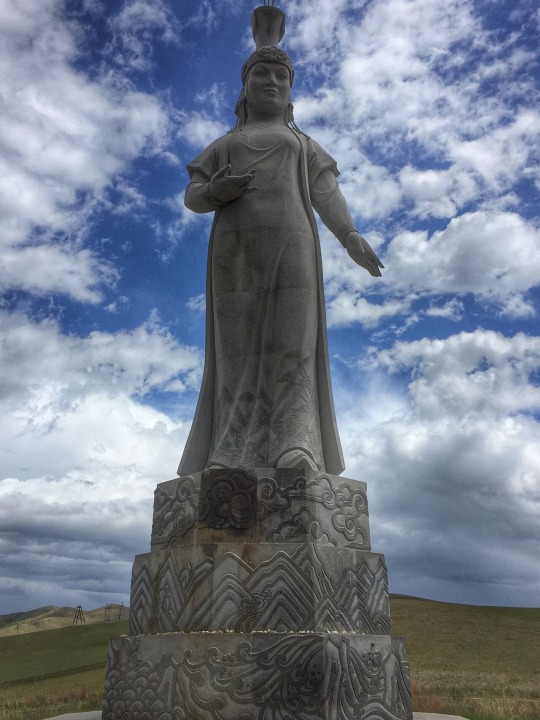
Statue of Hö'elün (Genghis Khan’s mother) in Tsonjin Boldog, Mongolia, not far from her son’s equestrian statue.
1 note
·
View note
Text
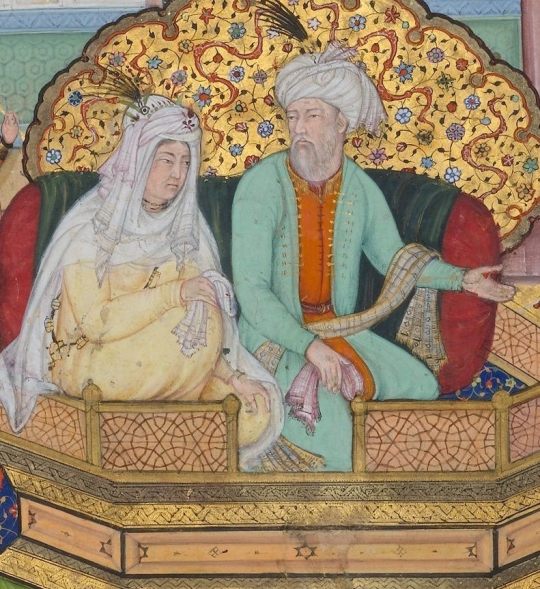
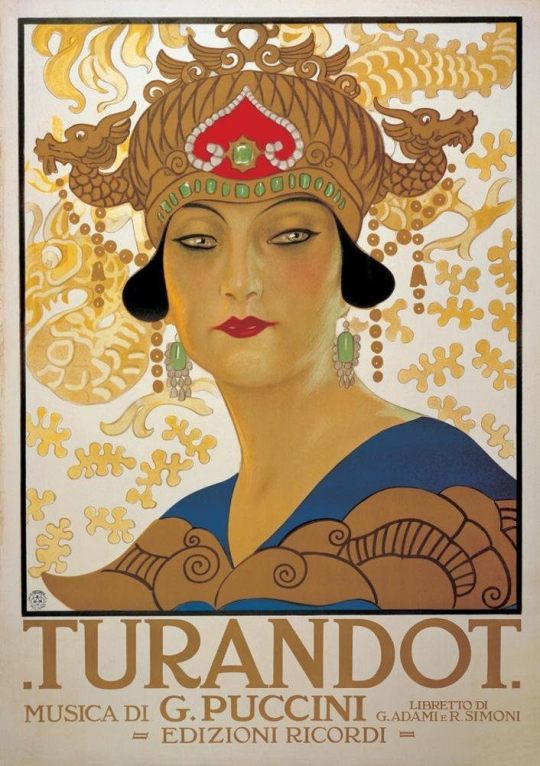
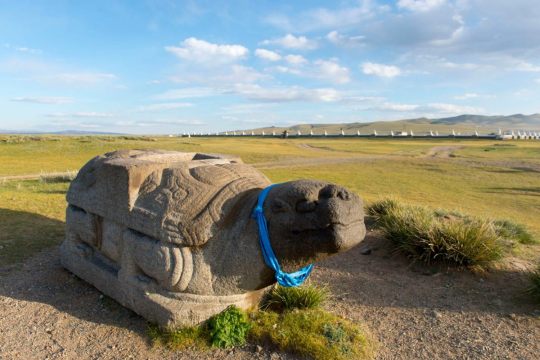
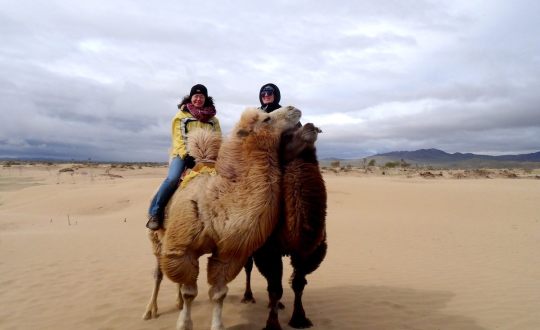
Grand Empress Börte (left) and Genghis Khan, more accurately called Chinggis Khan, from a 16th-century book commissioned by Mughal emperor Akbar the Great, who claimed descent from the khan. The Metropolitan Museum/Public Domain
The Women Who Ran Genghis Khan’s Empire From fighting in the army to managing the kingdom, women were key players in every aspect of the Mongol Empire. by Sarah Durn May 26, 2022
In 1178, a 17-year-old Mongol woman married a man she hardly knew. And while her husband traveled and fought and conquered, she ruled those who remained in Mongolia, managing every aspect of daily life in a massive nomadic camp. Commanders and shepherds alike reported to her, and she coordinated complex seasonal migrations of thousands of people and their livestock. At 28, she became the Grand Empress of the Mongol Empire; her name was Börte.
Börte’s husband, Chinggis Khan (also known, based on the Arabic transliteration, as Genghis Khan), receives all the glory for founding the largest contiguous land empire the world has ever known, but Börte and her immense contributions have been largely forgotten. While their husbands fought in distant, years-long military campaigns, Börte and other Mongol women kept the empire running. Some women also rode to war. Khutulun, Chinggis Khan’s great-great-granddaughter, would swoop down on the enemy “as deftly as a hawk,” wrote Marco Polo.
Atlas Obscura spoke with Central Asia scholar Anne Broadbridge, author of Women and the Making of the Mongol Empire, about the many roles women had in the Mongol Empire, how society perceived them, and the rise of perhaps the most powerful woman of the medieval world: Töregene.
What were the responsibilities and tasks of the Mongol women in charge of camps?
The better question would be what weren’t their tasks. I think we could put it all in the general category of management. [For example,] Chinggis Khan’s senior wife, Börte, is responsible for a camp. She’s responsible for their home, the yurt or ger that they live in. She’s responsible for the kids. If merchants come through, she’s going to talk to them about economic activity. She is going to oversee or perform the typical daily herding activities. There’s food preparation. There’s clothing preparation. There are religious rituals. There’s entertainment. It’s often a woman’s job to be the hospitable partner, to bring in food and welcome guests. And then there’s all the thousand and one little things that everyone does every day—mending things, checking in with people, checking on kids, making sure that the kids aren’t fighting too much, etc.
Furthermore, when the camp had to move from point A to point B, which it did regularly according to season and pasture, women were in charge of that. They organized the procession of carts. They’d drive that long line of carts, often drawn by oxen or yaks. When they arrived, they would place the yurts in the correct order, set them up, etc. So without women running the place where Mongols lived, there wouldn’t have been a camp for the Mongol men to return to from their military campaigns.
After Chinggis Khan’s death in 1227, many women rose to power. Why?
Succession is very complicated. But women can take over, in theory temporarily but sometimes not really temporarily, on behalf of some man, usually a son of their own.
So in the case of Töregene, who became regent of the entire Mongol Empire after the death of Chinggis Khan’s son Ögedei, or in the case of Sorghaghtani, who maneuvered her son to be the ruler of the entire empire, they’re functioning as senior widows who are regents for men. That’s perfectly acceptable in (their) nomadic society.
Khutulun, the great-great-granddaughter of Chinggis Khan and a fierce warrior, inspired the 20th-century opera Turandot. Public Domain
How did Töregene become regent of all Mongolia, around the year 1241?
She had remarkable skills. She enters the family in a very disadvantageous position. Chinggis Khan’s army kills her husband and she becomes a trophy wife for the third son of Chinggis Khan and Börte, Ögedei, who succeeds his father as overall Great Khan. Töregene isn’t even the senior wife (but) she produces five living sons. The senior wife produced no children. So sort of by default Töregene rises up. By the time Ögedei himself died, she was in a position to take over as the actual senior wife. So she wrote to all of the senior members of the family when her husband died and said, “Oh my goodness. We have this situation. What shall I do?” They wrote back and said you should be regent until we can get together and decide who will be the next ruler. So she worked the system very well in her own favor.
Ögedei, her dead husband, had a preference for who should be the next Great Khan. Töregene had a different preference. She wanted her oldest son to be Khan. And so at this big general assembly that she called and hosted and paid for, she managed to lobby successfully for her son to take over—even though this was in opposition to her dead husband’s express will.
A 13th-century stone turtle marks the site of Karakorum, the Mongol Empire’s capital, built in 1235 by Ögedei Khan. After his death, his wife Töregene ruled from here as regent. Wolfgang Kaehler/Getty Images
What was Mongol society’s perception of these powerful women?
We don’t have much [historical material from the Mongols], but what we do have implies acceptance. This is the way things are. Women have authority. They do certain things. You check in with them. You ask their advice. You listen to them when they speak. This is normal. So although outside observers see the amount of authority that some women have in these societies as unusual, for people living in those societies it was normal.
Did Mongol women fight in armies?
[Historians] have indeed found evidence that more than we thought of the Mongol armed forces were, in fact, women—maybe as much as 20 percent. We’re not talking half, but they were there.
What would you like the world to know about Mongol women?
I want people to know how much they mattered. They’re half the story at least. Without Mongol women, there would have been no Mongol conquest, no Mongol empire. There would have been nothing. In Mongol society, you have something like 90 percent of men able to mobilize and engage in warfare. No other contemporary society—not medieval China, not medieval Iran, not medieval Europe—can do that, because men have to do other jobs. They have to be priests, farmers, administrators. In Mongol society, women do all of that stuff. So without women behind the scenes running everything else, men would not have gone anywhere.
This interview has been edited for length and clarity.
-https://www.atlasobscura.com/articles/mongol-empire-women?utm_source=pocket-newtab
In Atlas Obscura’s Q&A series She Was There, we talk to female scholars who are writing long-forgotten women back into history.
Keep Exploring
Royalty The Forgotten Women Who Ruled the Medieval Middle East A new book tells the tales of the queens of Jerusalem. Sarah Durn
vikings 6 Epic Female Warriors You Don’t Want to Mess With From California’s mythic warrior queen to the swole women of Sparta to female hunters in ancient Peru. Sarah Durn
ancient cults The Most Lavish Mesopotamian Tomb Ever Found Belongs to a Woman And her clothing tells an important story, says archeologist Rita Wright. Sarah Durn
pyramids Remembering the Remarkable Queens Who Ruled Ancient Nubia Scholar Solange Ashby is uncovering the once-revered, now little-remembered female leaders of the Kushite kingdoms. Sarah Durn
1 note
·
View note
Text
Last in today's list is Terkhen Khatun:
She was one of the duo that ruled the Empire of Khwarezym, which was a fairly newly consolidated and still fragile great Iranian Islamic state that had the misfortune under her son of executing a couple of Mongolian merchants as the spies they were. She was by far bolder and more heroic than he was, but it did no good and left her to die in isolation and poverty as a prisoner in the Mongolian steppe, where her son was tied into a carpet and stomped to death.
The cruel irony is that being taken alive to die in poverty was a gesture of respect, where turning the coward and fleeing meant that her son, the dude stomped to death in the carpet, earned both scorn and contempt from the hordes of Genghis Khan.
And with the Middle East, as with China and a significant part of Asia the Mongol era can be taken as a watershed between the medieval and modern worlds and the start of the modern age.
#lightdancer comments on history#women's history month#islam and women's history#iran and women's history#terkhen khatun#mongol empire#mongol empire and women's history
0 notes
Text

"After his long absence, Genghis Khan had many pending problems to solve, not only among his Mongol subjects, but also with the Siberian tribes of the north and the Uighur farmers of the south. Some of the Siberian tribes that had first submitted to Mongol rule during Jochi’s invasion of 1207 used Genghis Khan’s lengthy absence on the Jurched campaign to quit sending tributary furs, forest products, and young women. When a Mongol envoy arrived to investigate, however, he found that in keeping with the fame of their women, they now had a woman chief whom they called Botohui-tarhun, a name that meant roughly Big and Fierce. Rather than surrender thirty maidens to the Mongols as wives, she took the Mongol himself captive. When the messenger did not return, Genghis Khan eventually sent another negotiator, and she took him captive as well.
In 1219, the Year of the Hare, Genghis Khan sent a trusted general with a detachment of good soldiers to find out what had happened. Accustomed to campaigning on the open steppes and in the farmlands, the Mongols had little experience fighting or traveling in the dense forest. Usually, the Mongols crossed the steppe by spreading out and moving forward on a broad front. In the forest, however, they had to follow one another along the narrow trails. Botohui-tarhun’s forces heard them coming long before they arrived in her territory, and like any experienced forest hunter, she set a trap for them. She sent a contingent of her troops to seal off the trail behind the men to prevent their escape, then she ambushed them from the front. Botohui-tarhun’s forces triumphed—and in the battle, her warriors killed the Mongol general.
Such a loss was highly unusual, and it enraged Genghis Khan. At first, he threatened to lead the army himself in vengeance against the victorious queen. His advisers soon convinced him otherwise. They prepared a large expedition, and this time the Mongols were determined to win by whatever means necessary. A small detachment of Mongol warriors moved out as a decoy pretending to guard the frontier trail and passes between the Mongols and the queen’s territory. Meanwhile, the Mongol soldiers in the main force of the army secretly cut a new road through the forest from another direction.
With axes, adzes, saws, chisels, and all the tools and weapons they could muster, the Mongols laboriously cleared a path by following the mountain trail of the “red bull,” probably the large reddish deer or elk. After completing the secret road, the Mongol soldiers swooped down on the queen’s headquarters so fast that in the words of the Secret History, it seemed as though they had descended “through the top of the smoke-holes of their tents.”
The victorious Mongols freed their envoys and brought back the tribe as prisoners to be divided up as servants and mates. Genghis Khan gave the queen Botohui-tarhun in marriage to the second of the envoys, whom she may have already taken as her husband since she had kept him as her prisoner and had not killed him. "
Jack Weatherford, Genghis Khan and the Making of the Modern World
#botohui-tarhun#history#women in history#women's history#warrior women#13th century#warrior queens#queens#powerful women#women warriors#siberia#siberian history#mongol history#Genghis Khan#asian history
53 notes
·
View notes
Text
you know i must have been bone-tired when this part of the herb brides lore didn't come to my mind when i discussed how the Kin fundamentally differs from the cultures it is inspired by um There Is The Human Sacrifice part. like it's an important part of pathologic 2 that you are doing human, or anthropomorphic (if you want to see the Herb Brides as closer to spirits, which comes with its own set of problematics regarding how to approach their oppression) sacrifice. it's an important part of pathologic 2 that you kill a woman, as part of the journey and in direct resonance with you ritualistically killing cattle earlier, and she offers herself to you with cultural and religious significance.
human sacrifices have been done across the globe for millennia, but i cannot, for the life of me, find any source at all that mentions the Buryats (since that was the discussion point) partaking in human sacrifices by the turn of the 19th-early 20th century (or even anything past the 16th). every single source mentioning offerings and sacrifices i've read mentions animals, things such as milk and vodka, and often both at once. would love to read anything about these rituals if papers exist, but i'm personally drawing a blank.
the Kin has Obvious and very Visible influences but it also differs from specific (in this discussion's case, the Buryats) or wider (here, turkic/mongolic as a whole) cultures from the area by so many pieces, big and small, that i wouldn't have enough appendages on my whole body to count them all. and sister. i have plenty of appendages.
#i AM reading a paper that mentions the human sacrifices at Mongol burials where people (typically servants or family) would be sacrificed#to accompany the dead; as well as the Shor practice of sacrificing women/girls (replaced apparently quickly by sacrificing ducks)#but those seem pretty old [the Mongol part mentions the 13th century] & like. nothing about the buryats in that time period#i'm like 85% sure i saw in the beginning of being into patho someone saying how equating the Kin; who practice human sacrifices [& others]#to correlate/be meant to represent Real Life ethnicities is insulting because They Don't Do That.#and like. everythingggg that touches upon representation/appreciation/appropriation/theft is subjective and#informed my how much leeway you're willing to give the creators so that's like#bro i'm just reading PDFs#also just found out the discussion of ''The Kin Is Obviously Inspired But Not Meant To Represent [x]'' is over 2yrs old. we're still at it.#as anon said. ''unless you're tolkien; coming up with a whole fictional language is hard''.#anyways appendage time. stuff that differs just out of the top of my head:#everything relating to the religion which is almost a complete inverse of buryat tengrist/shamanic faith + don't get me started on buddhism#the clothes. the homes. the creation myths; beyond the apparition of Clay; which is present in so many cultures on earth#no swan ancestor. no lake worship. no sky/heavens. no tens of named hierarchical deities. NO BURBOT! no hats. no hats (burts into tears)#NO HORSES? ON THE EURASIAN STEPPE?#the belief that earth mustn't be cut is so buryat. i'm sure i've read it. no idea if it is also in other mongolic peoples but buryat it is.#also a bull-ancestor/bull totem. that exists in buryat tribes; but they also have a bunchhhhh of other sacred animals (including. swans.#also horses. there's this [charm?] made out of horse hair there is)#neigh (blabbers)#i'm realizin how crazy i sound repeating shit that has been said 2yrs ago but like someone already mentioned the human sacrifice.#someone already mentioned the clothes. someone already mentioned the yurts/gers. someone already mentioned the religion#like i'm just. repeating stuff. and yet. give it up for year 2
22 notes
·
View notes
Text
so we (and by we, i mean the very specific overlap of jews and nerds among whom i make my home) talk a lot about how tolkien's dwarves, in both the books and movies, were likely influenced by certain jewish stereotypes. obsessed with gold/wealth, secretive (especially about their language and religion), refugees from their ancestral home, portrayed with big, sometimes hooked, noses and interesting facial hair, and most specifically: the favourite little meow meows of one particular god, causing them to be shunned and persecuted by other races and creeds. this is likely unintentional, coming from the subconscious of tolkien in the same way orcs were "based on mongols" (ew colonialism) and activating subconscious biases/stereotypes in the people who designed the dwarves for the movies. it's subtext, albeit subtext that influenced the next eighty years of fantasy.
but what i don't see much discussion of is the fact that in terry pratchett's discworld, it's intentional. terry pratchett's dwarves are, more or less, jews.
carrot is a human adopted by dwarves, based on human standards. but within dwarf culture, he IS a dwarf. specifically, he has undergone specific rituals and memorised certain passages, making him LEGALLY a dwarf. this is basically how conversion works in judaism. indeed, as in judaism, it's considered rude to even mention that carrot is six feet tall and obviously wasn't born into the culture he has adopted.
the dwarves also have internal rifts - there are a group of 'orthodox' dwarves who consider the dwarves in ankh-morpork (who have adopted other customs and don't follow traditional roles) not to be dwarves at all, and don't recognise carrot as a dwarf for the same reason. they believe that the way to be a dwarf is to live in an all-dwarf community and follow their traditional rules, while other dwarves believe they need to change with the times and integrate (at least somewhat) with larger society. jewish as fuck.
there's also the interaction of dwarves with gender. when cherie comes out as female (which isn't a recognised gender by dwarvish society) she is ostracised for taking on the feminine roles common to other discworld races. however, she could never THINK of cutting off her beard, because she is still a dwarf. i see parallels with women in judaism taking on roles traditionally considered 'masculine' (e.g., as rabbis, wearing tallit and kippot) and the acceptance of queer people into jewish communities. there's lots of great discussion about cherie as a trans character on tumblr, btw.
finally, something that particularly strikes me is the line from carrot in tfe, where he says that the biggest dwarf city on the disc is ankh-morpork. obviously all diaspora communities can relate, but it's really something to know that new york is the city with the most jews in the world (960k to jerusalem's 570k. btw, 3rd is LA!).
i just love that, again, consciously or unconsciously, pratchett incorporated more positive elements of jewish culture into his portrayal of the dwarves.
#gnu terry pratchett#discworld#jumblr#jewish#judaism#tolkien#dwarves#the hobbit#lord of the rings#the silmarillion#carrot ironfoundersson#cherie littlebottom#cheery littlebottom#the origin of dwarves in tolkien is jewish as fuck#also i love orthodox jews! y'all are so cool!! i hope this post doesn't come off as critical of orthodoxy#not bringing up the conflict between trolls and dwarves in the main post bc... yk... but like. it's there. it's VERY there.#also i do not want shit from people for mentioning jerusalem. it's a fun fact. read my fucking bio and then shout at me.#feels like i'm poking a hornet's nest by jewposting but we shall see#long post
612 notes
·
View notes
Text

Three girls from across the vast Eurasian steppe, and their really, really tall headdresses!
From left to right: the Russian kokoshnik, the Kazakh saukele, and the Mongol boqtaq.
BTW boqtaqs and kokoshniks could be worn by both married women and brides, while saukeles are normally only worn by brides in their weddings.
#folk fashion#folklore#ethnicwear#ethnicelegance#russia#mongolia#kazakh culture#mongol history#russian culture#slavic culture#eurasian#illustration#artwork#drawing#artists on tumblr
518 notes
·
View notes
Text
Maomao mini analysis
Maomao in The Apothecary Diaries is such a sad character, but she doesn't act like it because, in her world, it's kind of normalized. First, her mom, an esteemed courtesan, essentially hated her because she gave birth to her. Her biological dad is gone and not in her life (we know it wasn’t by choice, but this is from her perspective). She was raised in a brothel, and while she had people there who loved her, it's still a brothel. Even after she was adopted, she still had to take precautions to make sure she wasn’t going to be kidnapped or that nothing else would happen to her because of men.
After all of this, when she was still a teenager, she was kidnapped by a couple of guys and sold to the Emperor’s palace. These events are really traumatic, but at the same time, she still has the same indifference—as if she doesn’t care that much. She wants to stay in her own lane, and with her tactical genius (stemming from both her parents), this is relatively easy to do. But I wanted to know more, and since I’m taking AP World History in school, it wasn’t really that hard to understand why.
The Apothecary Diaries takes place during the Ming-Qing dynasty (possibly Song), which is evident because of the harem system, the clothing style, and the medicine she uses. During this time, China had been taken back from the Mongols, and the government, in an effort to get rid of their traditions, reinstated many old systems like the civil service exam, improved education, and reestablished the bureaucracy. The education aspect is evident in the series because of the plans to better educate women on basic skills like reading.
The part worth highlighting, though, is that China (and basically everywhere the Mongols ruled) was safer under their rule. So when everything became scattered again, safety greatly decreased, making things like kidnappings more common. This is probably why Maomao wasn’t distraught about being kidnapped. Still, the rest of what happened before this time is traumatic enough.
The main reason I give for this is that she’s used to it—not in a Stockholm syndrome way, but in an “oh, this happens sometimes” way. Being raised in the brothels, she likely saw the worst parts of humanity in the customers and the courtesans. Being exposed to this regularly probably caused her to naturally believe that humans do bad things—but not in an overly pessimistic way, since she still had good people taking care of her. Along with this, she is just practical in everything she does. She weighs the pros and cons of her actions before she acts. She discloses information that is important to wrap up a case so she doesn’t have more drama to deal with (unlike a lot of characters, which is why I love her).
While she still has a curious personality when it comes to mysteries, at this point in season 2, she has gained the trust of literally everyone important, making her unlikely to get into trouble. (This is still China in the 11th-12th century, so she still has to be careful, but compared to before, she has a lot more freedom.)
While her personality may look plain at first, you quickly grow to love her, especially her passion for medicines and poisons. The shift in her demeanor when poisons come into play is so fun to watch. This shows that, at the end of the day, she is still a teenager. She is mature but childlike at the same time when it comes to things she’s interested in. Women in this time were supposed to be, like in almost every other time in history, subordinate to men. Maomao, being as smart as she is, knows and acknowledges this but does not let it stop her. She goes against the status quo by being a completely independent woman who doesn’t need a man.
The best part of this is that she does it without really thinking about it. Her goal is not to go against the status quo or anything like that but simply to pursue her interests in life.
Overall, I just really love Maomao and the series, and it better keep getting new seasons until it’s done, or else I’m going to tweak out. I also wrote this while procrastinating on my AP World homework to “review” for the AP exam (which is like four months away), but I hope you guys like it.
#the apothecary diaries#anime#manga#maomao#jinshi#apothecary diaries#season 2#kusuriya no hitorigoto
99 notes
·
View notes
Text
I keep hearing that, as Muhammad's murderous jihadis crusaded their way across the Middle East, Africa, and Asia, the Islamic overlords "respected and even protected their subjects' right to practice their own religion, especially the Jews." If this is respect, I'd hate to see what the bad side of Islamic ethnic cleansing looks like: 622 - 627: Ethnic cleansing of Jews (who comprised roughly 50% of the population of Medina) carried out by Muhammad and his Jihadis. Over 800 Jewish men and boys (based on a pubic hair check), were killed by beheading. Women were forced into sexual slavery, and the children were given to Islamic Jihadis as slaves. Mohammad force-married Safiyyah, after murdering her husband and father.
629: 1st Alexandria Massacres of Jews, Egypt.
622 - 634: Exterminations of Arabian Jewish tribes.
1033: 1st massacre of Jews in Fez, Morocco.
1066: Granada Massacre of Jews, Muslim-occupied Spain.
1106: Ali Ibn Yousef Ibn Tashifin of Marrakesh decrees death penalty for any local Jew, including his Jewish Physician, and as well as his Jewish military general.
1148: Almohadin of Morocco gives Jews the choice of converting to Islam, or expulsion.
1165 - 1178: Jews of Yemen given the choice (under new constitution) to either convert to Islam or die.
1165: Chief Rabbi of the Maghreb was publicly burnt alive. The Rambam (Maimonides, Moses ben Maimon), forced to flee Spain to Egypt.
1220: Tens of thousands of Jews massacred by Muslims Turkey, Iraq, Syria, and Egypt, after being blamed for Mongol invasion.
1270: Sultan Baibars of Egypt resolved to burn all the Jews, a ditch having been dug for that purpose; but at the last moment he repented, and instead exacted a heavy tribute, during the collection of which many perished.
1276: 2nd Fez Pogrom (massacre) against Jews in Morocco
1385: Khorasan Massacres against Jews in Iran
1438: 1st Mellah Ghetto massacres against Jews in Morocco
1465: 3rd Fez Pogrom against Jews in Morocco, leaving only 11 Jews left alive
1517: 1st Safed Pogrom in Muslim Ottoman controlled Judea
1517: 1st Hebron Pogrom in Muslim-controlled Judea, by occupying Ottomans
1517: Marsa ibn Ghazi Massacre of Jews in Ottoman-controlled Libya
1577: Passover Massacre throughout the Ottoman Empire
1588 - 1629: Mahalay Pogroms of Jews in Iran
1630 - 1700: Yemenite Jews considered 2nd class citizens and subjugated under strict Shi'ite 'dhimmi' rules
1660: 2nd Judean Pogrom, in Safed Israel (Ottoman-controlled Palestine)
1670: Expulsion of Mawza Jews in Yemen
1679 - 1680: Massacres of Jews in Sanaa, Yemen
1747: Massacres of the Jews of Mashhad, Iran
1785: Pogrom of Libyan Jews in Ottoman-controlled Tripoli, Libya
1790 - 92: Tetuan Pogrom. Morocco (Jews of Tetuan stripped naked, and lined up for Muslim perverts)
1800: Decree passed in Yemen, criminalizing Jews from wearing clothing that is new or good, or from riding mules or donkeys. Jews were also rounded up for long marches naked through the Roob al Khali dessert
1805: 1st Algiers Massacre/Pogrom of Jews in Ottoman-controlled Algeria
1808: 2nd Ghetto Massacres in Mellah, Morocco
1815: 2nd Algiers massacres/pogroms of Jews in Ottoman-controlled Algeria
1820: Sahalu Lobiant Massacres of Jews in Ottoman-controlled Syria
1828: Baghdad massacres/pogroms of Jews in Ottoman-controlled Iraq
1830: 3rd massacre/pogrom of Jews in Ottoman-controlled Algiers, Algeria
1830: Ethnic cleansing of Jews in Tabriz, Iran
1834: 2nd massacre of Jews in Ottoman-controlled Hebron, Judea
1834: Massacre/pogrom of Safed Jews in Ottoman-controlled Palestine/Judea
1839: Massacre of the Mashadi Jews in Iran
1840: Damascus Affair following first of many blood libels against Jews in Ottoman-controlled Syria
1844: 1st Cairo Massacres of Jews in Ottoman-controlled Egypt.
1847: Dayr al-Qamar massacre of Jews in Ottoman-controlled Lebanon
1847: Ethnic cleansing of the Jews in Jerusalem, Ottoman-controlled Palestine
1848: 1st Damascus massacre/pogrom, in Ottoman-controlled Syria
1850: 1st Aleppo massacre/pogrom of Jews in Ottoman-controlled Syria
1860: 2nd Damascus massacre of Jews in Ottoman-controlled Syria
1862: 1st Beirut massacre of Jews in Ottoman-controlled Lebanon
1866: Massacre of Jews by Ottomans Kuzguncuk, Turkey
1867: Massacre of Jews by Ottomans in Barfurush, Turkey
1868: Massacre of Jews by Ottomans in Eyub, Turkey
1869: Massacre of Jews in Ottoman-controlled Tunis, Tunisia
1869: Massacre of Jews in Ottoman-controlled Sfax, Tunisia
1864 - 1880: Massacres of Jews in Ottoman-controlled Marrakesh, Morocco
1870: 2nd Alexandria Massacres of Jews in Ottoman-controlled Egypt
1870: 1st Istanbul massacre of Jews in Ottoman Turkey
1871: 1st Damanhur Massacres of Jews in Ottoman-controlled Egypt
1872: Massacre of Jews by Ottomans in Edirne, Turkey
1872: 1st Massacre of Jews by Ottomans in Izmir, Turkey
1873: 2nd Damanhur Massacres of Jews in Ottoman-controlled Egypt
1874: 2nd Izmir massacre of Jews in Turkey
1874: 2nd massacre of Jews in Istanbul Turkey
1874: 2nd massacre of Jews in Ottoman-controlled Beirut, Lebanon
1875: 2nd massacre of Jews in Ottoman-controlled Aleppo, Syria
1875: Massacre of Jews in Djerba Island, Ottoman-controlled Tunisia
1877: 3rd massacre of Jews in Ottoman-controlled Damanhur, Egypt
1877: Massacres of Jews in Mansura, Ottoman-controlled Egypt
1882: Massacre of Jews in Ottoman-controlled Homs, Syria
1882: 3rd Massacre of Jews in Ottoman-controlled Alexandria, Egypt.
1890: 2nd massacre of Jews in Ottoman-controlled Cairo, Egypt.
1890: 3rd massacre of Jews in Ottoman-controlled Damascus, Syria.
1890: 2nd massacre of Jews in Ottoman-controlled Tunis, Tunisia
1891: 4th massacre of Jews in Ottoman-controlled Damanahur, Egypt.
1897: Targeted murder of Jews in Ottoman-controlled Tripolitania, Libya.
1903 &1907: Massacres of Hews in Ottoman-controlled Taza & Settat, Morocco.
1901 - 1902: 3rd set of massacres of Jews in Ottoman-controlled Cairo, Egypt.
1901 - 1907: 4th set of Massacres of Jews in Ottoman-controlled Alexandria, Egypt.
1903: 1st massacre of Jews in Ottoman-controlled Port Sa'id, Egypt.
1903 - 1940: Series of massacres in Taza and Settat, Morocco.
1907: Massacre of Jews in Ottoman-controlled Casablanca, Morocco.
1908: 2nd Massacre of Jews in Ottoman-controlled Port Said, Egypt.
1910: Blood libel against Jews in Shiraz, Iran.
1911: Massacre of Jews by Muslims in Shiraz, Iran.
1912: 4th massacre in Ottoman-controlled Fez, Morocco.
1917: Baghdad Iraq Jews murdered by Ottomans.
1918 - 1948: Yemen passes a law criminalizing the raising of a Jewish orphan in Yemen.
1920: Massacres of Jews in Irbid Jordan (British mandate Palestine).
1920 - 1930: Arab riots resulting in hundreds of Jewish deaths, British mandate Palestine.
1921: 1st Jaffa (Israel) riots, British mandate Palestine.
1922: Massacres of Jews in Djerba, Tunisia.
1928: Jewish orphans sold into slavery, and forced to nvert to Islam by Muslim Brotherhood, Yemen.
1929: 3rd Hebron (Israel) massacre of Jews by Arabs in British mandate Palestine.
1929 3rd massacre of Jews by Arabs in Safed (Israel), British mandate Palestine.
1933: 2nd Jaffa (Israel) riots, British mandate Palestine.
1934: Massacre of Jews in Thrace, Turkey.
1936: 3rd riots by Arabs against Jews in Jaffa (Israel), British mandate Palestine.
1941: Massacres of Jews in Farhud, Iraq.
1942: Muslim leader Grand Mufti collaboration with the Nazis, playing a major role in the final solution.
1938 - 1945: Full alliance and collaboration by Arabs with the Nazis in attacking and murdering Jews in the Middle East and Africa.
1945: 4th massacre of Jews by Muslims in Cairo, Egypt.
1945: Massacre of Jews in Tripolitania, Libya.
1947: Massacre of Jews by Muslims in Aden, Yemen.
2023: Massacre, rape, torture and kidnapping of ~1,500 Israelis (mostly Jews) by Muslims in numerous towns throughout southern Israel.

#israel#secular-jew#jewish#judaism#israeli#jerusalem#diaspora#secular jew#secularjew#islam#ethnic cleansing#genocide#Islamic Jihad#jihad#MENA#Middle East#islamic colonialism#islamic Imperialism#antisemitism#massacres#pogroms#anti semitism#syria#turkiye#hate crime#Farhud#iraq#iran#iranian
205 notes
·
View notes
Photo

The Nerge: Hunting in the Mongol Empire
The peoples of the Mongol Empire (1206-1368 CE) were nomadic, and they relied on hunting wild game as a valuable source of protein. The Asian steppe is a desolate, windy, and often bitterly cold environment, but for those Mongols with sufficient skills at riding and simultaneously using a bow, there were wild animals to be caught to supplement their largely dairy-based diet. Over time, hunting and falconry became important cultural activities and great hunts were organised whenever there were major clan gatherings and important celebrations. These hunts involved all of the tribe mobilising across vast areas of steppe to corner game into a specific area, a technique known as the nerge. The skills and strategies used during the nerge were often repeated with great success by Mongol cavalry on the battlefield across Asia and in Eastern Europe.
Hunted Animals
The Mongols, like other nomadic peoples of the Asian steppe, relied on milk from their livestock for food and drink, making cheese, yoghurt, dried curds and fermented drinks. The animals they herded - sheep, goats, oxen, camels and yaks - were generally too precious as a regular source of wool and milk to kill for meat and so protein was acquired through hunting, essentially any wild animal that moved. Animals hunted in the medieval period included hares, deer, antelopes, wild boars, wild oxen, marmots, wolves, foxes, rabbits, wild asses, Siberian tigers, lions, and many wild birds, including swans and cranes (using snares and falconry). Meat was especially in demand when great feasts were held to celebrate tribal occasions and political events such as the election of a new khan or Mongol ruler.
A basic division of labour was that women did the cooking and men did the hunting. Meat was typically boiled and more rarely roasted and then added to soups and stews. Dried meat (si'usun) was an especially useful staple for travellers and roaming Mongol warriors. In the harsh steppe environment, nothing was wasted and even the marrow of animal bones was eaten with the leftovers then boiled in a broth to which curd or millet was added. Animal sinews were used in tools and fat was used to waterproof items like tents and saddles.
The Mongols considered eating certain parts of those wild animals which were thought to have potent spirits such as wolves and even marmots a help with certain ailments. Bear paws, for example, were thought to help increase one's resistance to cold temperatures. Such concoctions as powdered tiger bone dissolved in liquor, which is attributed all sorts of benefits for the body, is still a popular medicinal drink today in parts of East Asia.
Besides food and medicine, game animals were also a source of material for clothing. A bit of wolf or snow leopard fur trim to an ordinary robe indicated the wearer was a member of the tribal elite. Fur-lined jackets, trousers, and boots were a welcome insulator against the bitter steppe winters, too.
Continue reading...
102 notes
·
View notes